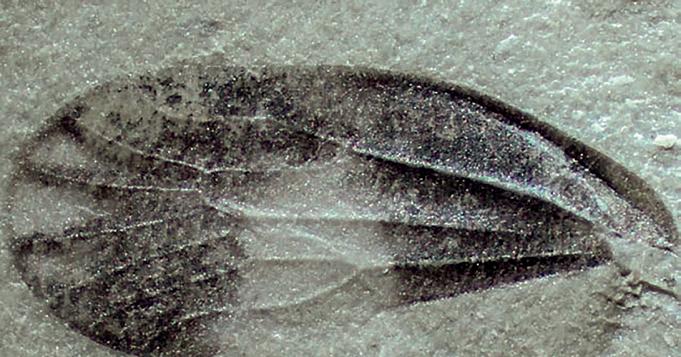
3 minute read
Earth's history in delicate detail
An unassuming road-cutting is producing thousands of exquisitely preserved fossils in the Sutherland District of the Northern Cape. In research published in "Communications Biology", experts from the Albany Museum, Rhodes University and the Evolutionary Studies Institute at Wits, among others, explain how these tiny fossils of plants and insects, many of them only millimetres long, reveal a previously unknown ecosystem on the quiet shores of a pool 266 million years ago.
Dr Rosemary Prevec (PhD 2005), the principal author of the paper, is based at the Albany Museum, Makhanda in the Eastern Cape. She has been curator and head of the Earth Sciences Department since 2016 and research associate in the Botany Department at Rhodes University.
Plants, insects and small things tend not to share the limelight with dinosaur and hominid discoveries, but the stories they tell can be just as fascinating and their message powerful.
“We currently know a fair bit about the reptilian animals that roamed the Karoo of South Africa during the middle Permian Period, a time long before the dinosaurs appeared. These creatures included the predecessors of tortoises and the strange and lumbering therapsids that would later give rise to the mammals, but we have little idea about what else was around at the time,” the researchers’ statement reads.
Scientists are now gaining a better understanding of what the world looked like before the onset of two key extinction events in Earth’s history, at the end of the Guadalupian Epoch (about 260 million years ago) and then the largest extinction event ever, at the end of the Permian Period (about 252 million years ago).
“Our new fossils will change ideas about the evolution of some important plant and insect groups and their distributions across the super continent of Pangaea. The superb quality of fossil preservation means that soft-bodied organisms that very rarely preserve in the fossil record are present at the site.”
For example, a new, early damsel-fly and hundreds of tiny nymphs belonging to the stoneflies, a group that still lives in the streams today, are the oldest records of Gondwana.
The authors say they are still finding new fossils every field season. “We are also working hard to describe each of the beautiful plants and creatures that have emerged and are trying to figure out why fossils were preserved so beautifully in this area.”

An plant fossil from the site known as the Onder Karoo

An invertebrate discovery from the site known as the Onder Karoo
Images: Communications Biology
Sources: The Conversation and "Communications Biology"










